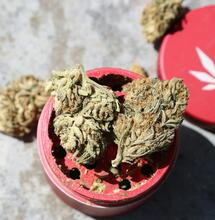Developments in the Arizona Cannabis Market

Recreational marijuana sales in the state of Arizona are on the rise, while the medical cannabis market appears to be shrinking. It's a pattern that seemingly repeats in few other states that have fully legalized Cannabis in recent years.
Most of 2022 followed a pattern where Arizona's medical marijuana sales dropped month to month while sales of recreational products grew and hit new record highs.
In October, the disparity in sales was more than evident. Sales of medicinal marijuana products remained at around $31 million, a drop of more than $1 million compared to September 2022.
On the other hand, the retail of recreational marijuana goods in October surpassed $85 million, a climb of over $5 million compared to September. The numbers are reported by the Arizona Department of Revenue (ADOR).
Further according to ADOR, in January 2022, the recreational pot sales in Arizona were below $70 million. After that, all months have marijuana expenditure of more than $70m.
The numbers for the Arizona market are still coming. It's expected that legal sales in 2022 had generated more than the $1.5 billion sold in 2021, the first year of legal business in The Grand Canyon State.
Flower remains Arizona's best-seller, followed by edibles in second place.
How Does Arizona Manage Marijuana Tax Money?
Recreational sales have a 16 percent excise tax added to the standard sales tax. Medical patients pay about 6 percent in state sales tax, levied as a Transaction Privilege Tax on cannabis retailers. In addition, municipalities charge approximately 2 percent for all marijuana sales.
Typically, the money from marijuana tax is in the millions. State officials divert this money to several different sectors. Community college and community college districts receive one-third of all recreational taxes. Public safety agents such as the police, the fire department, and the first respondents receive 31 percent. The Arizona Highway User Revenue Fund gets 25 percent of the tax earnings. The justice reinvestment fund, which provides public health services, counseling, job training, and other services to communities unfairly affected by previous drug laws, receives 10 percent of marijuana tax earnings.
Why is the Arizona Medical Program Shrinking?
According to the Arizona Department of Health Services (ADHS), the body that oversees cannabis regulation in the Grand Canyon State, the issue comes down to the restructuring in licensing created with Proposition 207, the voter initiative that legalized marijuana in 2020.
Cardholders are currently subdivided into five categories: qualified patients, designated caregivers, dispensary agents, facility agents, and lab agents.
The facility agents is a new one and it designates that industry workers can work in dispensaries, medical marijuana outlets, facilities, or adult-use outlets. These cards cost less to obtain and are more practical to run a business with. Following the legalization, there has been an increase in the number of facility agent cardholders and a subsequent decrease in the number of dispensary agent cards, according to ADHS. This was followed by a drop in the number of qualified medical patients as well, which are now less than 170,000, or a loss of tens of thousands of registered patients.
Is It Only Arizona's Medical Market?
It doesn't look like it. Similar trends have also been observed in other states. Another example is the state of Michigan, where a decline in the medical cannabis sector has taken off since recreational retail went legal in 2019.
Between 2021 and 2022, Michigan appears to have "lost" around 100,000 qualifying patients and around 20,000 primary caregivers, which is between a 40-50% drop. In contrast, sales of cannabis flower on the recreational market jumped from 25,000 pounds in Jan. 2022 to almost 60,000 at the end of the year.
Many factors could be contributing to the "shrinking" phenomenon in the medical cannabis segment. It may mean that many people who previously were on the medical cannabis program are now supplying their medicines from recreational or hybrid outlets, and their spending is counted as recreational. Consumers might be exploring options for the cheapest way to obtain legal weed. Or they could even be turning to the black market. For now we cannot know the full implication and effect of the shrinking pattern.

_11zon.jpg)



















